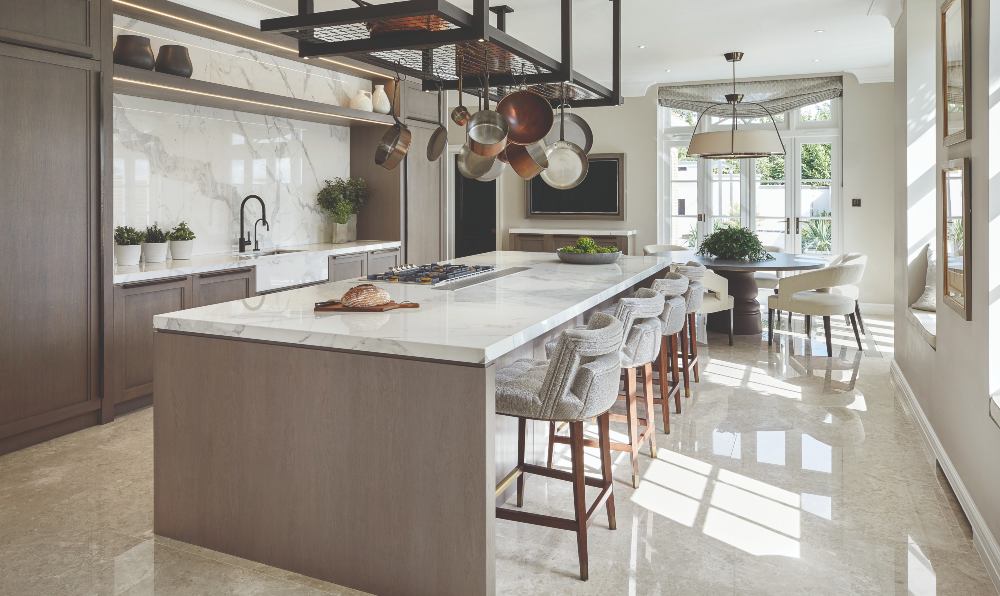
2020 Vision: Home Improvement
This is the year you finally make it happen. We look at how to create the home you really want, from establishing your vision and making it future-proof to choosing an architect and the first steps you need to take
Tailor to Your Lifestyle and Plan for the Future
The biggest and most important part of the process is to plan, plan, plan. Then plan again. How do you use your space now, what would you like to be able to do that you can’t, and will your requirements now still be the same in a couple of years’ time?
“By far the easiest way to save money on a project is to allow enough time in the detailed design phase. Making key decisions here can save up to three times more in terms of costs than once construction work has started,” notes Tamsin Bryant from Adams+Collingwood. “As architects our job is to manage the clients’ expectations in terms of how they want to live, how they actually live and how best to live in the specific property – we also take a view on how to maximise the property not only adding value, but also in good design principles. With many more people working flexibly and work/life balance being more important these days, productivity, functionality and the efficiency of your property’s space plan can save you time (which these days is money!), and it’s important to work with your architect to lay out spaces and task areas in your home in a more optimised and logical manner. Improving the space utilisation of your home also adds value; who wants to pay for unusable space? Who wants to heat and cool unusable space?”
“An architect should be able to maximise your space for the best use. A brief isn’t just a wish list of spaces, it should go further on how you live,” says architect Sophie Bates. “Make the largest space the one you will use the most and really consider how it can be used. Infrequently used smaller spaces should be multi-functional. What other use could the spare room have? Consider how often would you use a media room or gym for example and would it be used all year around?
An important question to ask is: ‘What makes this a home for me?’, advises architect Paul Vick. “This starts out as a simple question, but actually gets to something deeper. At the same time it will allow you with your architect to make prioritised decisions throughout.”
You also need to look at how you will use your home in the future. “A large refurbishment can take a year to plan and design and a year on site, so your children will have changed and have different needs,” notes Sophie.
Says co-founders of London Projects – Nick Stuttard and Steve Howat: “It’s very important to think about requirements of all members of the family and the people who will be living in the property – not just the person who pays the bill. A successful house will have the right mix of open family and entertaining space, combined with smaller, private individual areas. Considering family growth and how the home will need to adapt on a longterm basis is key – taking this into account at the beginning of a project will help ensure that you’ll have a home that will grow with you, rather than just suiting a specific living arrangement in the moment.”
Team Work
With any extension and refurb project, you need to choose a team that you can trust and understands your vision. Says Sophie: “Don’t rush into appointing an architect until you have found one who you can really trust and relate to, who inspires you and has experience. You may also need a team of consultants or a party wall surveyor, lighting designer, interior designer and you will likely need drainage surveys, and building surveys. Make sure your architect will lead the team.”
And do meet the proposed foreman who will be on site. Adds Sophie: “Personal relationships are so important, so trust your gut and choose the building team you feel is the best fit for your home.” Make sure you have a fully priced scope of works with each element costed separately with day labour rates. This way if there are any alterations during the build you can clearly see the likely cost of the omission/ addition.
The Legal Side
Getting the right permissions in place is absolutely crucial. Your architect should be able to help you navigate the local process and what is likely, and unlikely, to be passed. It can take time so do this well in advance of your proposed build. “Applying to the council for pre-application advice may be worth the time to give your application the best chance of success. Also note that there is a lot you can do under permitted development. You may want to apply for part or all of the development this way. Under permitted development, you can extend to the rear up to 8m if your neighbours don’t object,” notes Sophie. Adds Paul: “Public good will help your case. Planning committees look for sustainable environmental, economic and social benefits of your project through an improved built environment. Be transparent. Done right, neighbour and community buy-in smooths the path ahead.”
Plan for Success
- Find out if your budget matches your expectations. Build in a contingency sum for any problems.
- Set out a clear brief with your objectives, and any constraints such as timescales or being able to live at the property during works.
- Allow time for planning permission – there is an eight week deadline for nonmajor developments but can be longer.
- Be clear on fees, and make sure you will have the funds available when they become due.
- Don’t forget to tell your mortgage company and insurers of your plans.
FURTHER READING: adamscollingwood.com, londonprojects.co.uk, paulvick.co.uk, sophiebates.com






